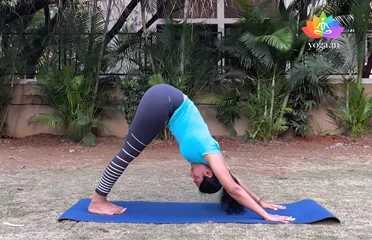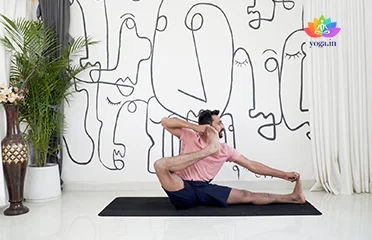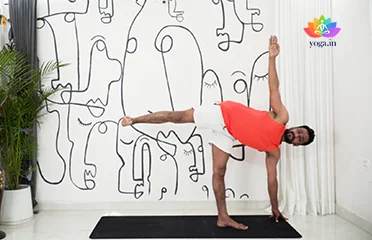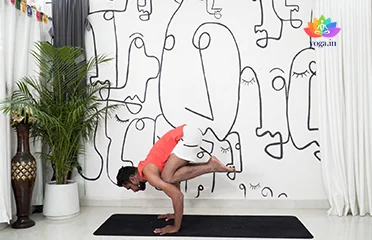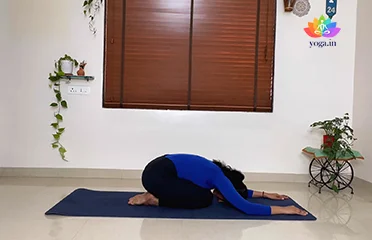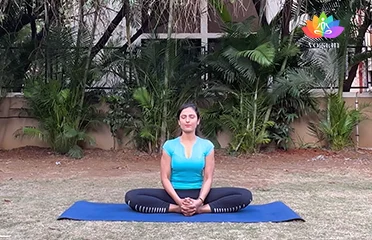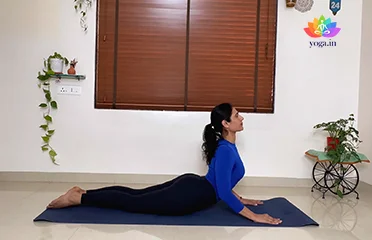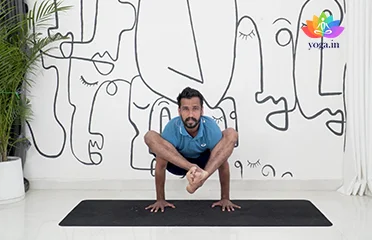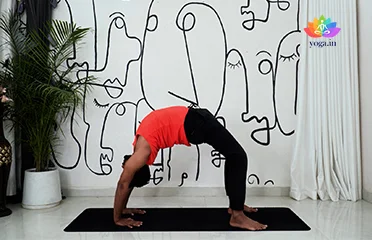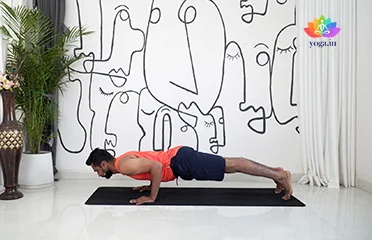Adho Mukha Svanasana (Downward-Facing Do
अधोमुख श्वानासन / Downward-Facing Dog Pose
The sanskrit name is derived from adhas (अधस्) meaning down, mukha [�K]
Akarna Dhanurasana (Archer Pose)
अकर्णा धनुरासन / Archer Pose
The Sanskrit name is derived from Akarna (अकर्णा ) meaning towards [�K]
Ardha Chandrasana (Half Moon Pose)
अर्धचन्द्रासना / Half Moon Pose
The Sanskrit name is derived from Ardha (अर्ध) meaning half, Chandra [�K]
Bakasana (Crane Pose)
बकासन / Crane Pose
The Sanskrit name is derived from Baka (बक) meaning crane or Kaka (काक) [�K]
Balasana (Child’s Pose)
बालासना / Child's Pose
The Sanskrit name is derived from Bala (बाला) meaning child and āsana [�K]
Bhadrasana (Gracious Pose | Butterfly Po
भद्रासन / Gracious Pose | Butterfly Pose
The Sanskrit name is derived from Bhadra (भद्रा) meaning gracious, [�K]
Bhujangasana (Cobra Pose)
भुजंगासन / Cobra Pose
The Sanskrit name is derived from Bhujanga (भुजंगा) meaning cobra [�K]
Bhujapidasana (Shoulder-Pressing Pose)
भुजपीडासन / Shoulder-Pressing Pose
The Sanskrit name is derived from Bhuja (भुज) meaning arm/shoulder, Pida [�K]
Chakrasana (Wheel Pose)
चक्रासनI / Wheel Pose
The Sanskrit name is derived from Chakra (चक्रा) means wheel and asana [�K]
Chaturanga Dandasana (Low Plank Pose)
चतुरङ्ग दण्डासन / Low Plank Pose
The Sanskrit name is derived from Chatur (चतुर) meaning four, Anga (अङ्ग) [�K]
- 1
- 2
- 3
Expanding Your Breath -Yoga for a Healthy Chest
Yoga offers a range of benefits for overall health and well-being, and the chest area is no exception. While yoga doesn’t directly target internal organs like the lungs or heart, it can improve your posture, breathing capacity, and the flexibility of the muscles surrounding the chest, all of which can contribute to a healthier respiratory system and a more open and comfortable feeling in the chest.
Benefits of Yoga for the Chest –
- Improved Posture: Certain yoga poses can help correct rounded shoulders and promote a more upright posture. This can create more space in the chest cavity, allowing for deeper and easier breathing.
- Enhanced Flexibility: Yoga stretches can increase the flexibility of the chest wall muscles and diaphragm, which can improve lung capacity and breathing efficiency.
- Stress Management: Yoga’s focus on mindful movement and breathwork helps manage stress hormones, potentially reducing tension in the chest area and promoting feelings of relaxation.
- Increased Body Awareness: Yoga cultivates a deeper connection with your body, allowing you to identify areas of tightness in the chest and modify poses accordingly.
Yoga Practices for the Chest –
Here are some examples of yoga practices that may benefit the chest area:
- Chest Openers: Poses like Cobra Pose (Bhujangasana), Upward-Facing Dog Pose (Urdhva Mukha Svanasana), and Bow Pose (Dhanurasana) can help gently stretch and open the chest wall muscles.
- Diaphragmatic Breathing (Ujjayi Pranayama): This breathing technique emphasizes using the diaphragm for deeper, more efficient breaths, which can improve lung function and oxygen intake.
- Supported Backbends: Poses like Supported Bridge Pose (Setu Bandhasana) with blocks or bolsters can gently open the chest and improve flexibility.
Remember –
- Listen to Your Body: Modify poses based on your comfort level. Don’t force any movements that cause pain.
- Focus on Breath: Maintain slow and steady breathing throughout your practice.
- Seek Guidance: Consider practicing with a qualified yoga instructor who can guide you safely and offer modifications according to your needs.
- Start Slowly: Begin with gentle practices and gradually progress as your flexibility and comfort improve.
Additional Tips –
- Warm Up: Before starting your yoga practice, perform gentle warm-up exercises to prepare your body for movement.
- Cool Down: After your practice, take time to cool down with gentle stretches and relaxation techniques.
- Consistency is Key: Regular yoga practice, even for short periods, can be more beneficial than infrequent long sessions.
By incorporating these practices and prioritizing professional medical advice, yoga can become a valuable tool for promoting a healthy chest and overall well-being. Remember, yoga is a journey of self-discovery. Find practices that suit your individual needs and listen to your body for optimal results.


